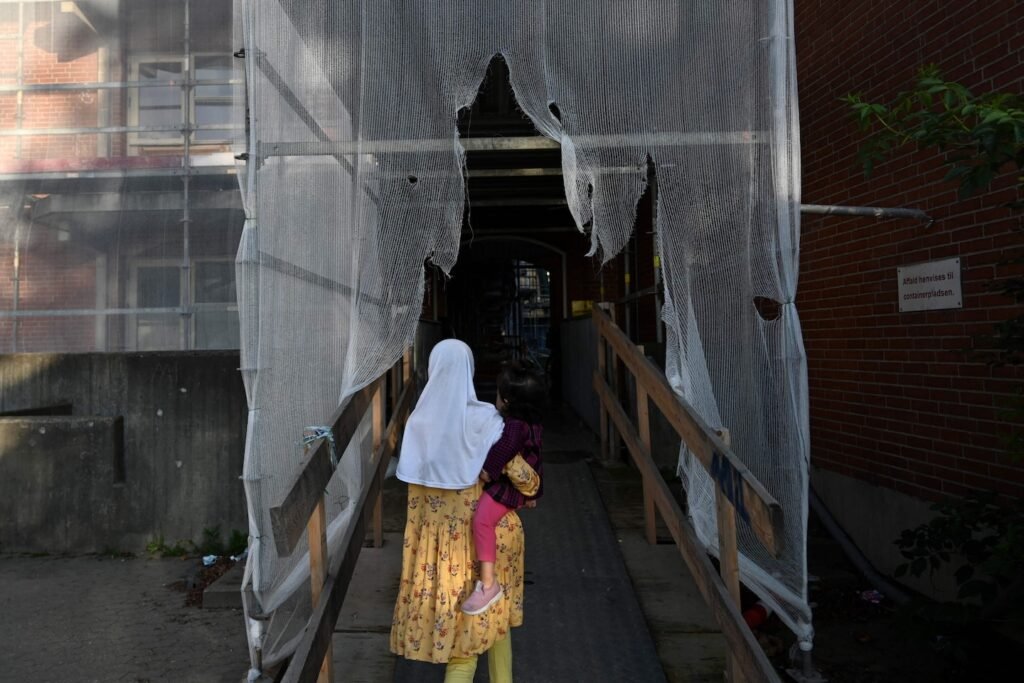The Danish program targets so-called parallel societies, social housing projects where more than half of the residents are “non-Western” (more on the loose definition of this term later) and who score worse than average on at least two of four indicators: income, employment, education, and criminal history.
The goal is to overhaul these neighborhoods by 2030 through demolition, densification and gentrification. In some places, this will mean privatizing and renovating apartment buildings that have been subsidized for decades. But in others, working-class immigrants from Pakistan, Lebanon, Syria and other countries are being forcibly evicted, their buildings razed or gutted to make way for development. Communities are fracturing, and many residents are scattering.
In the United States, such demolitions would be outlandish: statistics showing too many high-school dropouts and convicted shoplifters would be the equivalent of taking a wrecking ball to Chinatown. They might even be made illegal, depending on a European Union court ruling expected next year.
In small, tidy, high-tax Denmark, the policy is uncontroversial: Only two of the country’s 12 political parties, both far-left, have criticized it. The belief that immigrants should accept (vaguely defined) Danish standards of behavior is widely held.
A 2018 government report argued that “holes have been punched in the map of Denmark”, citing immigrants who don’t work, learn the language and “don’t accept Danish norms and values”.
This could be an attractive model for other countries where anti-immigrant sentiment is on the rise and voters believe integration has failed: Swedish officials have discussed adopting a Danish-style policy, and German officials are also considering it.
Denmark’s policy was launched in 2018 after four decades of rising immigration, during which new immigrants from the Middle East, Asia and Africa increased almost tenfold to about 500,000, or 8.5% of the population.
The shift is typical of countries across the continent, where once-homogeneous nations have become ethnic mosaics unrecognizable to many older Europeans. Insecurity, intolerance and, frankly, deep-rooted racism have fueled the rise of far-right parties. Nowhere is this more evident than in France, where an anti-immigration party once a bastion of anti-Semites and former Nazi collaborators is now leading the polls, potentially coming to power in parliamentary elections this month.
Denmark’s parallel society plan would see the expulsion of immigrants and potentially their children who were born and educated in Denmark. The government argues that discriminating against non-Western residents (defined as people from outside the 27 European Union countries, the United States, Canada, Australia and a small number of other wealthy, white-majority countries) is not ethnic discrimination, which is illegal under European law.
But this brilliant legal argument does not obscure the fact that the majority of those displaced are brown-skinned Muslims. In 2020, a UN panel of experts said Denmark’s policy risked discriminatory treatment of the country’s non-white, non-European minorities.
“If the people living in these areas were from South America, I don’t think the government would have a problem with them,” said Eddie Kawaja, a lawyer representing residents challenging the system at the European Court of Justice.
As Danish member of parliament Thomas Momberg, a Social Democrat, explained to me, the reasoning is that a country of just six million people can’t tolerate heterodox communities while relying on broad political support from its citizens to maintain lifelong social security. Integrating immigrant-heavy areas would improve them, he said.
But the government has struggled to explain why the policy exempts areas with large Danish populations but similar education, employment, income and crime problems. And while officials say statistical indicators are improving in transitioning areas, no one keeps track of immigrants who are forcibly removed from them.
In the two Copenhagen neighborhoods I visited, many people supported the program, especially those of Danish descent. But some immigrants said it was rooted in prejudice. “I think if you’re not Muslim, they’ll leave you alone,” said Abdullahi, a 38-year-old engineer who asked not to give his last name and who said his Somali parents brought him to Denmark as a child.
What’s odd about the parallel society plan is the insecurity it reflects in one of the world’s success stories: Denmark ranks at or near the top of almost every positive EU ranking, including GDP per capita, and Danish wealth is more equitably distributed than in many rich countries. Denmark attracts international students, and Copenhagen is the second-most liveable city in the world, according to the Economist Intelligence Unit.
Against this background, one might ask: if Denmark wants to tackle its problems of crime, low income, employment and education, why not do so without discriminating against its residents on the basis of their nationality?

